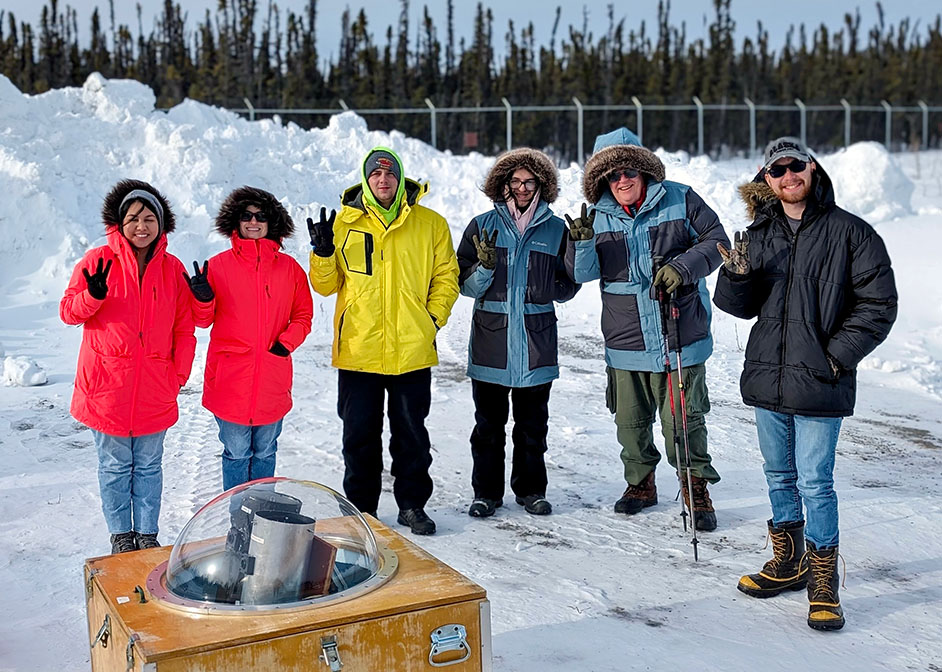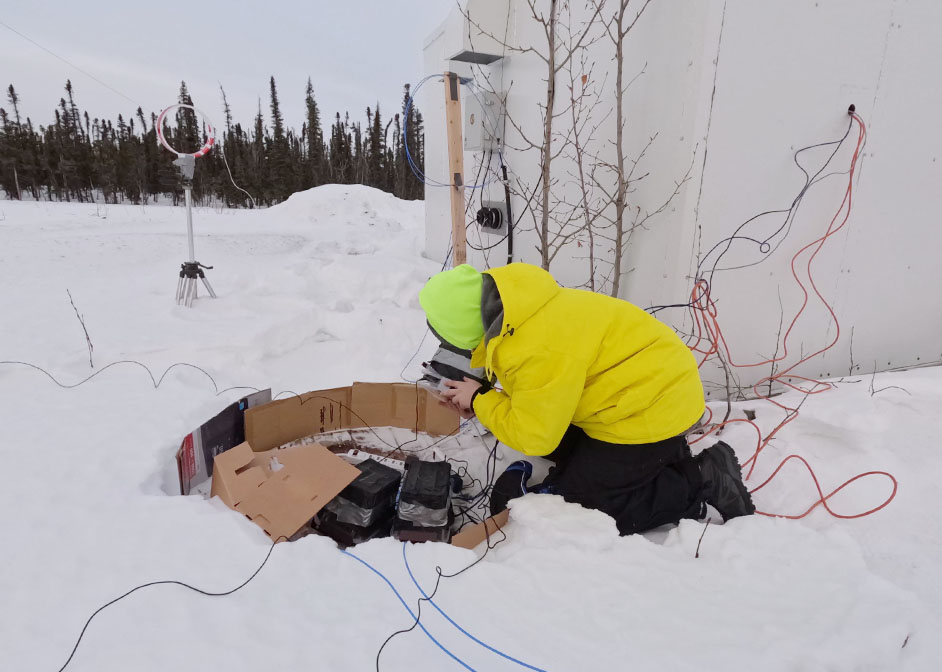Group Gains Better Understanding of Dynamics at Different Levels of Earth’s Atmosphere
A group of University of Houston student researchers were selected to run experiments during the week-long winter campaign of the High-Frequency Active Auroral Research Program (HAARP) operated by the University of Alaska Fairbanks.

Two UH students served as principal investigators, leading projects during this experience. All other projects were led by university faculty from around the nation.
The group consisted of Alicia Dykema, Joshlyn Mendez, Tyler Philo, Jason Ruszkowski and Diego Sosa. They were led by Edgar Bering, professor of physics at UH’s College of Natural Sciences and Mathematics.
“These students are the best in their field, and I’m privileged to have them here,” said Bering. “Senior scientists from HAARP were so impressed with their work, that they invited them to participate among faculty in their winter campaign. It’s rare for HAARP to ask students to lead their own experiments.”
HAARP has long been at the forefront of studying the Earth's upper atmosphere.
The program provides research experiences into the realms of atmospheric science and ionospheric research while shedding light on phenomena such as radio wave propagation, ionospheric disturbances, and space weather effects.
The HAARP facility, located in Gakona, Alaska, offers an array of powerful instruments and antennas capable of emitting radio waves into the ionosphere, stimulating various phenomena that can be observed and studied. By leveraging these resources, students had the chance to contribute to ongoing research efforts while honing their scientific skills.
"HAARP provided a unique platform for exploring the Earth's upper atmosphere," said Ruszkowski, a physics major. "We not only gained practical experience but also made meaningful contributions to advancing our understanding of atmospheric physics."

“This was our first chance to play with the big dogs in the field,” said Philo, a physics major. “We were doing real science with real scientists out on location.”
Exploring Light Scattering and Atmospheric Airglow
In a project led by Ruszkowski, he focused on stimulated Brillouin scattering by satellite transmission. This is when light projected from a source is scattered by tiny vibrations in the material it’s traveling through, such as crystals or glass.
“The vibrations are like small disturbances that cause the waves to change their path slightly,” said Ruszkowski. “For my project, the material it was traveling through was the ionosphere itself. So, by using radio waves from a satellite and using HAARP to excite the ionosphere, I was able to shift the radio waves coming from the satellite to a completely different frequency.”
The other project, led by Dykema, examined airglow spectrum analysis for the artificial ionospheric reflector experiments. This project looked closely at the molecules that cause a faint glow, or aurora, in the night sky.
“By studying the different colors in the airglow spectrum, we can learn about the composition and dynamics of the atmosphere at different altitudes,” said Dykema. “Collecting this information is important for experiments involving artificial ionospheric reflectors.”
The reflectors can be used to manipulate the ionosphere for various purposes, such as improving satellite communication or studying space weather.
Both Ruszkowski and Dykema previously conducted atmospheric experiments as part of the Undergraduate Student Instrument Project (USIP), which also took place in Alaska.
Turning Challenges into Opportunities
Preparation time for HAARP was much shorter than USIP.
“We only had about two months to get ready for this experiment,” said Dykema. “We had two years to prepare for USIP.”
Unlike being in Houston where research supplies and resources are abundant, the site in Alaska is sparsely populated, which presented challenges.
“You really learn how to be resourceful,” said Philo. “You work with what you have and find a workaround for what you don’t have to complete the experiment.”
- Chris Guillory, College of Natural Sciences and Mathematics